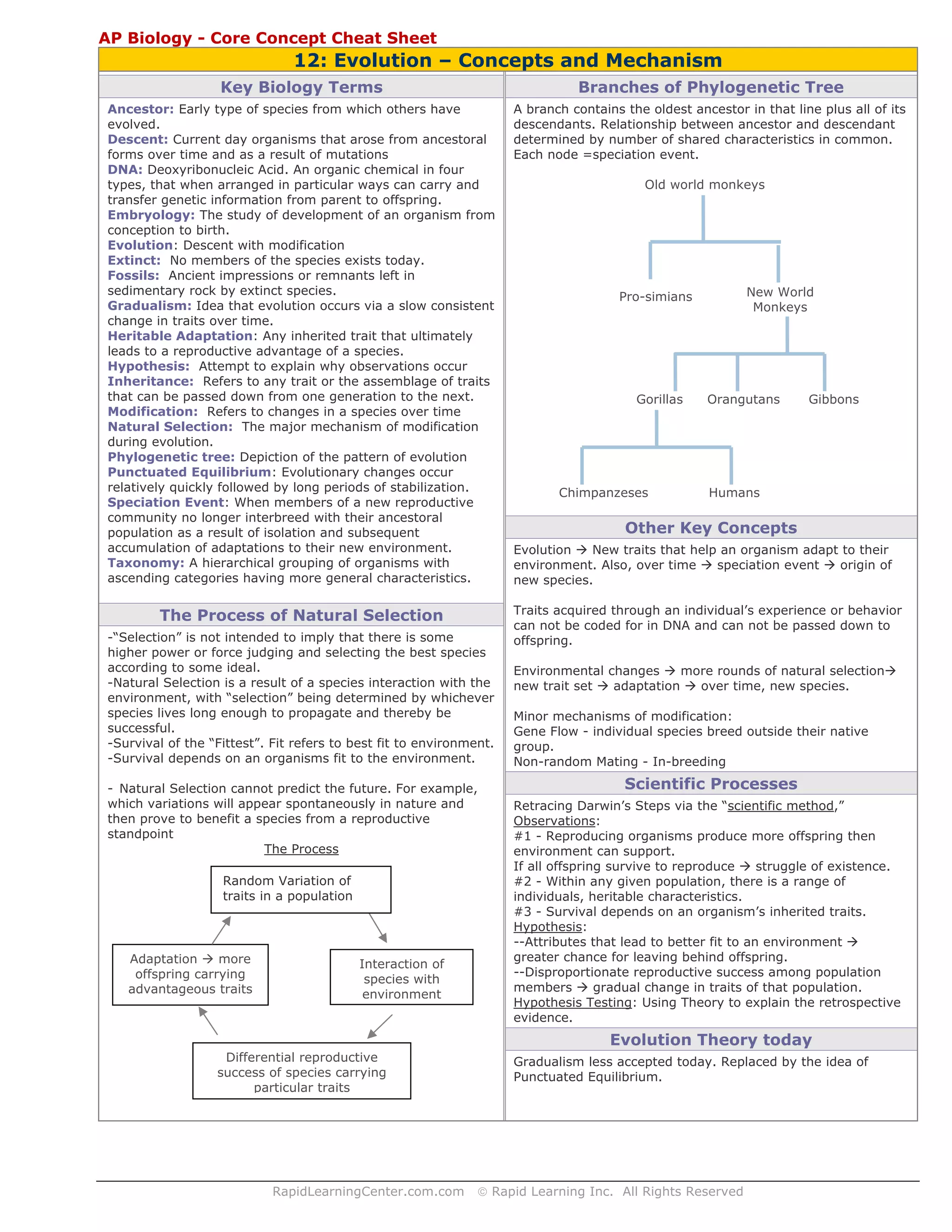This document provides a summary of key biology terms and concepts related to evolution, including:
- Definitions of important terms like ancestor, descent, DNA, fossils, natural selection, and speciation.
- A description of the process of natural selection, including how random genetic variations, interaction with the environment, and differential reproductive success can lead to adaptation over time.
- A phylogenetic tree showing the evolutionary relationships between major primate groups like humans, chimpanzees, gorillas, orangutans, gibbons, and old and new world monkeys.
